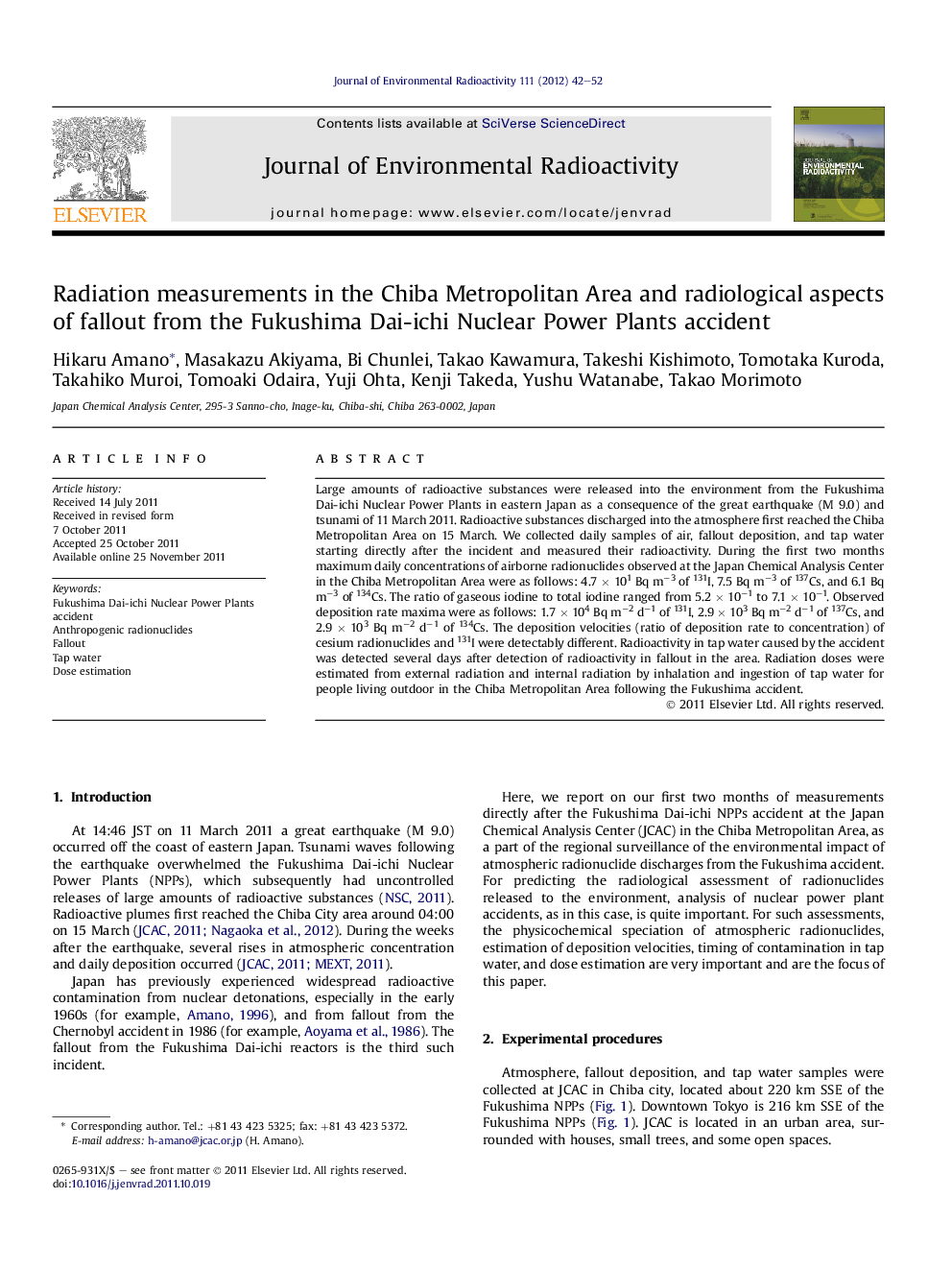| Article ID | Journal | Published Year | Pages | File Type |
|---|---|---|---|---|
| 1738353 | Journal of Environmental Radioactivity | 2012 | 11 Pages |
Large amounts of radioactive substances were released into the environment from the Fukushima Dai-ichi Nuclear Power Plants in eastern Japan as a consequence of the great earthquake (M 9.0) and tsunami of 11 March 2011. Radioactive substances discharged into the atmosphere first reached the Chiba Metropolitan Area on 15 March. We collected daily samples of air, fallout deposition, and tap water starting directly after the incident and measured their radioactivity. During the first two months maximum daily concentrations of airborne radionuclides observed at the Japan Chemical Analysis Center in the Chiba Metropolitan Area were as follows: 4.7 × 101 Bq m−3 of 131I, 7.5 Bq m−3 of 137Cs, and 6.1 Bq m−3 of 134Cs. The ratio of gaseous iodine to total iodine ranged from 5.2 × 10−1 to 7.1 × 10−1. Observed deposition rate maxima were as follows: 1.7 × 104 Bq m−2 d−1 of 131I, 2.9 × 103 Bq m−2 d−1 of 137Cs, and 2.9 × 103 Bq m−2 d−1 of 134Cs. The deposition velocities (ratio of deposition rate to concentration) of cesium radionuclides and 131I were detectably different. Radioactivity in tap water caused by the accident was detected several days after detection of radioactivity in fallout in the area. Radiation doses were estimated from external radiation and internal radiation by inhalation and ingestion of tap water for people living outdoor in the Chiba Metropolitan Area following the Fukushima accident.
